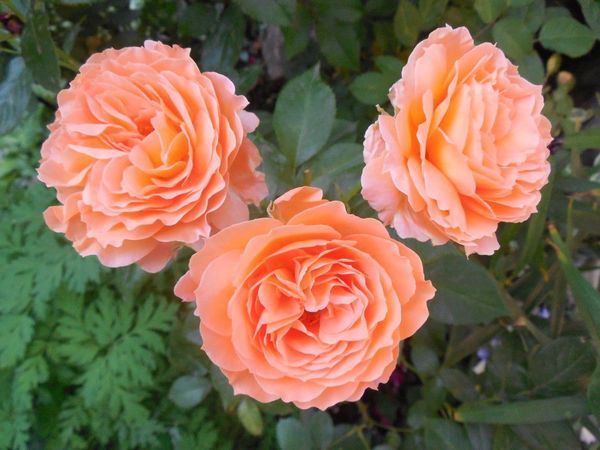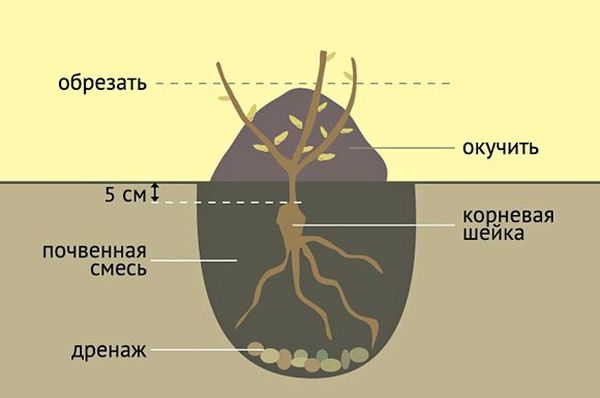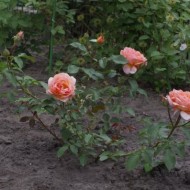Delicate rose Belvedere - a charming hybrid for the garden and greenhouse
Content
- 1 The history of the creation of the Belvedere rose
- 2 Video "Rules for planting roses"
- 3 Qualitative characteristics and features of the variety
- 4 Advantages and disadvantages of the variety
- 5 General advice for planting and growing
- 6 Prevention of diseases and pests
- 7 Application in landscape design
- 8 Florist reviews
The history of the creation of the Belvedere rose
Rose Belvedere was bred in Germany in 1996. By the way, the name of the variety - Belvedere - is translated from Italian as "beautiful view". In France, the word "belvedere" was the name given to gazebos located in beautiful places.

Video "Rules for planting roses"
In this video, an expert will tell you how to properly plant roses in the garden.
Qualitative characteristics and features of the variety
The rose belongs to the number of scrubs, i.e. shrubs. It is a hybrid tea and is particularly resistant to cold weather.
Ornamental qualities of the bush
The shrub reaches 1.5 m in height and 1.2 m in width. The foliage is dark green, with a smooth surface. As the buds bloom, they begin to acquire a bright orange hue, which after some time becomes a delicate peach.
The flowers are rather large, double, and can reach 15 cm in diameter. Up to 4–5 flowers can ripen on one stem. The bush inflorescences exude a tart sweet aroma.
Flowering features
The flowering period begins in June and lasts until the onset of cold weather. Flowers are not afraid of drought and rainy weather, therefore they remain on the bush for a long time.
Drought resistance and winter hardiness
The crop is winter-hardy and can withstand temperatures as low as -30 ° C. However, it is still recommended to cover the plant for the winter. Warming is carried out after the onset of the first frost. All buds and foliage must be removed from the shrub. In addition, you need to loosen the upper layers of the earth. In this case, oxygen will freely flow to the root system, so that it will not rot.
Coniferous spruce branches, agrofibre or juniper foliage are perfect as insulation. Branches bent to the ground must be laid on coniferous branches. Otherwise, there is a great risk of rotting culture.
The variety belongs to drought tolerant. However, this does not at all preclude the need for regular watering.
- Rose of the Belvedere variety stands out for its winter hardiness
- The variety belongs to drought tolerant
- Rose Belvedere are unpretentious in care
Advantages and disadvantages of the variety
- resistance to fungal diseases and various pests;
- frost resistance;
- unpretentious care;
- high indicators of decorativeness;
- a long flowering period that lasts from early June to autumn.
- if certain growing conditions are not observed, the culture is prone to gray spot;
- in some cases, shrubs do not tolerate lower temperatures.
General advice for planting and growing
The best option for a rose is a nutritious, slightly acidic soil. It is important that the deep layers of the soil are not wet, otherwise the root system may rot. When planting a rose in your summer cottage, it is important to observe an interval between shrubs of 2 m.
A thick layer of drainage and compost should be laid in a hole 60 cm deep.The seedling is placed in the hole so that the root collar is deepened into the ground.
The main care for the Belvedere rose is pruning. In the spring, damaged, rotten and dry shoots are removed, and healthy branches are shortened so that their height does not exceed 50 cm.
Every 5 years, it is recommended to carry out anti-aging pruning, during which the old branches are shortened, and the lateral ones are pruned by a quarter.
Fertilization is fundamentally important when it comes to caring for a flower. In summer, the culture is fed with compounds of phosphorus and calcium. With the onset of autumn, potassium is added to the top dressing - this will strengthen the shoots before frost. In the spring, it is recommended to apply nitrogen fertilizers. They stimulate the growth of young twigs in the best way.
Water the rose as the top layer of the soil dries. Watering must be carried out directly at the root, without affecting the foliage of the shrub.
Loosening is another important care item. Loosening of the soil becomes especially important before preparing for winter. This will ensure the supply of sufficient oxygen to the roots of the culture and prevent them from rotting.

Prevention of diseases and pests
The hybrid variety is susceptible to powdery mildew and some other fungal diseases. The main reason for their occurrence is waterlogged soil. One of the main signs of the disease is the shedding of foliage, its darkening, violation of the integrity of the leaf plate.
Often, roses are harmed by such insects:
- aphid;
- spider mite;
- caterpillars.
Spraying is recommended to prevent infection. The most popular recipe for making a solution for treating roses is Bordeaux liquid. It is obtained by combining copper sulfate, quicklime and slaked lime.
Application in landscape design
Considering the description of the appearance of the shrub, it becomes obvious that the culture has high decorative properties. Rose is actively used in landscape design. It is planted in both single and group plantings. Belvedere goes well with lilac, thuja, juniper.
Florist reviews
Reviews of gardeners once again confirm the quality of the Belvedere hybrid.
“The first year after planting was difficult, I thought the shrub would not take root. But now it is a densely flowering bush that pleases us with its incredibly beautiful flowers. "
“I've been growing the Belvedere for a long time. There is no disease, no sensitivity to cold or drought. Excellent variety! "
Thanks to its qualities, the hybrid tea variety has gained the confidence of gardeners, so now the Belvedere rose can be found at every summer cottage.



